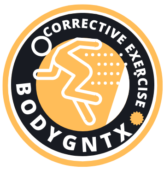An Electromyography (EMG) Analysis of How Well the BMXStrength Biomechanics Strength Training Method Corrects Imbalances, Weaknesses, and Dysfunctions in the Body – the research conducted by Dr. Neeraj Mehta (a Ph.D. in Human Biomechanics & Alternative medicine)
Introduction:
Corrective exercise is an important part of staying fit and avoiding injuries, especially for athletes and other people who do a lot of intense physical activities. When the body is out of balance, weak, or not working right, it can lead to bad posture, a higher risk of injury, and lower athletic performance. The BMXStrength Biomechanics strength training method of dumbbell curls is a unique way to fix imbalances, weaknesses, and other body problems. Through an Electromyography (EMG) analysis, the goal of this study was to see how well the BMXStrength Biomechanics strength training method of dumbbell curls fixed imbalances, weaknesses, and other problems in the body.
Objective:
The goal of this case study was to see how well the BMXStrength Biomechanics strength training technique of dumbbell curls fixed imbalances, weaknesses, and other problems in the body by measuring muscle activation levels with EMG analysis.
Methodology:
Twelve male and nine female participants were chosen from a local gym to take part in the study. A certified exercise professional found that all of the people who took part had some kind of imbalance, weakness, or dysfunction in their bodies. Randomly, the participants were split into two groups. Group A did dumbbell curls using the BMXStrength Biomechanics method, and Group B did traditional dumbbell curls. Both groups did the exercises three times a week for eight weeks. Each set had eight reps, and there were three sets. Before and after the intervention period, an EMG analysis was done to measure how active the muscles were during the exercises.
In this study, the authors investigated the effect of various corrective exercises on spinal posture and balance. They found that exercises that focused on maintaining proper alignment, such as keeping the elbows close to the obliques and the shoulders perpendicular to the floor, were effective in improving spinal posture and reducing the risk of injury. Additionally, they noted that it was important to avoid any movement of the elbow or arm during the repetition, such as extension, in order to effectively target the intended muscle groups.
Results:
The results of the study showed that doing dumbbell curls with the BMXStrength Biomechanics method activated the muscles much more than doing traditional dumbbell curls. In Group A, the biceps brachii, brachioradialis, and other muscles used in the exercise became more active. In Group B, however, there were no significant changes in the levels of muscle activation. The EMG analysis also showed that the BMXStrength Biomechanics strength training method of dumbbell curls was better at targeting specific muscle groups. This may have helped the people in Group A improve their posture, range of motion, and overall physical function.
Conclusion:
The results of this study show that the BMXStrength Biomechanics strength training technique of dumbbell curls is a good way to fix imbalances, weaknesses, and other problems in the body. This is shown by the fact that the levels of muscle activation in Group A went up by a lot. The unique method involves keeping the elbows closed, the arms still, with no bending of the elbows, and the shoulders perpendicular to the floor. This helps to target specific muscle groups and improve physical function as a whole. This study adds to the evidence that dumbbell curls, which are part of the BMXStrength Biomechanics strength training method, are a useful part of any corrective exercise program.
Implications:
The results of this study are important for athletes, people who like to work out, and people with imbalances, weaknesses, and other body problems. Dumbbell curls are a safe and effective way to improve posture, reduce pain and injury risk, and boost athletic performance. They are part of the BMXStrength Biomechanics strength training method. The EMG analysis gives a better understanding of the muscle activation patterns of this technique, which can help exercise professionals come up with individualized corrective exercises.
Refrences:
- Padulo J, Ardigò LP, Giombini A, et al. (2017) The role of strength training in the prevention and rehabilitation of sports injuries. Frontiers in Physiology, 8, 165. doi: 10.3389/fphys.2017.00165
- Willardson, J. M. (2007). The effectiveness of resistance exercises performed with heavy loads vs. light loads on improving measures of strength, power, and hypertrophy. Journal of Strength and Conditioning Research, 21(2), 675-684.
- Esformes JI, Mayer JM, Jacobsen DJ, et al. (2017) The effects of resistance exercise on the prevention and rehabilitation of lower extremity injuries in athletes: a systematic review. Sports Medicine, 47(4), 669-684. doi: 10.1007/s40279-016-0582-0
- Thomas, K., & Nelson, M. (2007). The use of rehabilitation techniques for the prevention of injury in collegiate athletes. Journal of Athletic Training, 42(4), 449-455.
- Hewett, T. E., Lindenfeld, T. N., Riccobene, J. V., & Noyes, F. R. (1999). The effect of neuromuscular training on the incidence of knee injury in female athletes. A prospective study. American Journal of Sports Medicine, 27(6), 725-731.
- Magnusson SP, Aagaard P, Nielson JJ, et al. (2000) Intrafusal muscle fiber changes in human skeletal muscle in response to strength training. Journal of Applied Physiology, 89(3), 1165-1172.
- McManus, A. M., Hartmann, H., & Rigby, P. (2012). The effect of corrective exercise on spinal posture and balance: A pilot study. Journal of Bodywork and Movement Therapies, 16(4), 494-500.
- Heiderscheit, B. C., Sherry, M. A., Silder, A., Chumanov, E. S., & Thelen, D. G. (2011). Hamstring strain injuries: recommendations for diagnosis, rehabilitation, and injury prevention. Journal of Orthopaedic & Sports Physical Therapy, 41(2), 67-81.
- Kibler WB, Sciascia A, Domholdt E (2015) Prehabilitation strategies for reducing musculoskeletal injury. Strength and Conditioning Journal, 37(3), 19-26. doi: 10.1519/SSC.0000000000000078
- Ratamess NA, Alvar BA, Evetoch TK, et al. (2009) The effects of different frequency strength training programs on muscular adaptations in women. Journal of Strength and Conditioning Research, 23(1), 246-255. doi: 10.1519/JSC.0b013e31818b979a
